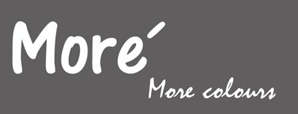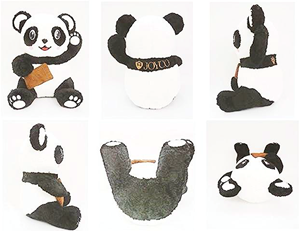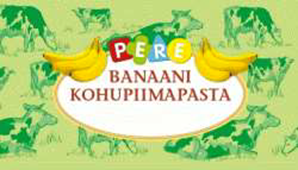We invite you to have a look at the 47th issue of Turvaja newsletter.

Newsletter No. 30
September 2019
Decisions of the Estonian Industrial Property Board of Appeal
I Oppositions
Decision No. 1755-o
Earlier trademarks
MORE &
MORE & MORE ACADEMIA
MORE & CO.
MORE & MORE
Opposed trademark

The trademarks are confusingly similar.
According to the Board, the applicant’s mark is visually, phonetically and semantically similar to the earlier trademarks in so far as it is likely to cause confusion.
In the present case, the stylization of the applicant’s mark is very minimal and the beginning of its verbal element is identical to that of the earlier marks. The likelihood of confusion is further increased by the fact that the marks in question are registered for identical or very similar goods and services.
The applicant’s claim that “More´” is a French word pronounced [moree] is false. In French, accents are used on the vowel, not after the letter. Today, ”nd”, “and” and “&” have been replaced by the shorter symbol “´”. It is therefore possible to pronounce the contested mark in the same way as the earlier trademarks.
The opposition was sustained.
Decision No. 1768-o
Earlier trademarks
PANDA



Opposed trademarks
JOYCO (ruumiline)
JOYCO + kuju

The trademarks are visually, phonetically, semantically and conceptually different.
The opponent’s earlier Panda series word and figurative marks represent planar reproductions or graphic images which are not visually, phonetically, semantically and conceptually similar or identical to the applicant’s later three-dimensional mark. When seeing a two-dimensional word and a figurative mark, the consumer does not perceive an identical or similar image as compared to the three-dimensional image created by seeing a three-dimensional mark. Contrary to the opponent’s contention, the Board considers that the lettering on the black edge of the panda bear’s three-dimensional mark is sufficiently visible, legible and phonetically pronounced on the reproduction.
The similarity from a conceptual point of view, i.e. a reference to a panda bear, cannot be considered significant as it is a commonly used motif for the goods concerned. The dominant part of the three-dimensional mark, JOYCO, is not wholly included in the earlier Panda series marks of the opponent.
The opposition was dismissed.
Decision No. 1777-o
Earlier trademark
Vacqueyras
Opposed trademark
VAQERA
The trademarks are not confusingly similar.
The Board considers that, in the present case, the marks at issue are not identical or similar, and therefore the VAQERA mark is not an imitation of the designation of origin “Vacqueyras” (French wine region). The contested mark is sufficiently distinguishable from the protected designation of origin. Namely, the elements are of different length, visually distinct and their pronunciation is sufficiently contrasting for the Estonian consumer.
The Board also considers it necessary to note that, in the context of these proceedings, purely vague assumptions made by the opponent could not be used to assess potential future behavior of the applicant and warrant refusal to register the applicant’s trade mark solely based on doubts regarding the applicant’s use of the mark with the relevant product specification.
The opposition was dismissed.
Decision No. 1576-o
Opponent’s element

Opposed trademark

The opponent’s element has not become well-known for the public.
Both the opponent’s element and the opposed trademark depict cows. The applicant calls such a design “cows grazing freely in the meadow,” the opponent considers the element to be a concept, and describes it as “free-roaming cows.”
The Board agrees with the applicant’s claims that the concept cannot be registered as a trademark. Similarly, the Trademark Act does not allow a concept to be recognised as well-known within the meaning of the Act. In addition, the Board considers that three advertising pages and two ads on YouTube are not sufficient for the element at issue to be considered as well-known. The depiction of cows on the merchandise of the various dairy and cheese industries and the advertising of these merchandise has become commonplace.
In order to enforce copyright under the Trademark Act, an appellant must prove his or her authorship of a particular copyright object. This has not been proven by the opponent. In the Board’s view, it is unclear exactly what the opponent considered to be his work.
The opposition was dismissed.
Decision No. 1759-o
Earlier trademark
ASPIRIN
Opposed trademark

The trademarks are not confusingly similar.
The Board considers that the marks at issue are visually different. The earlier mark is made up of seven letters and the applicant’s mark consists of five letters, the middle letters being completely different. The difference in the two letters is also noticeable to the average consumer, as it alters the length of words visually significantly. The Board further considers that the shape contained in the applicant’s mark is a distinctive and conspicuous element.
The Board observes that the marks are also pronounced differently in their entirety, because of the different number of syllables, the length of the words and the emphasis on pronunciation.
The earlier trademark relates to consumers as an analgesic and an antipyretic drug. Meanwhile, the applicant’s trademark may be associated with a U.S. winter sports resort or an English equivalent for the word “haab” (“aspen” in Estonian”). The Board therefore considers that there is also a clear semantic difference between the marks at issue.
In addition, the Board considers it important to point out that there are many different names of medicaments beginning with ASP, belonging to different persons in both the Register of Medicinal Products and the databases of Estonian and European Union trademarks. It follows that, more generally, the initials ASP in the market for pharmaceuticals and other Class 5 goods are not such as to be attributable solely to the opponent.
The opposition was dismissed.
Decision No. 1749-o
Reproduction of the mark applied for by the opponent

Reproduction of the opposed trademark

The applicants, as those who filed first for the trademark, shall be entitled to the relating rights.
The opponent has essentially asked to be identified as the applicant/owner of the contested mark. This is not possible under applicable law. An application made by other persons cannot be transferred to a third individual.
There is no dispute that the Vanemõde ensemble was formed in late 1985. However, it has not been proven that the name of the ensemble was provided by the opponent and that they would have the exclusive right to use that name because of its reputation or otherwise.
The applicants have filed a trade mark for registration. This logo is a copyright work. The applicant has not transferred their authorship to the opponent.
The evidence and other circumstances presented in the proceedings do not give rise to any greater right of the opponent to the contested trade mark; the earlier trade mark applicants have the right to the disputed trademark.
The opposition was dismissed.
II Appeals
Decision No. 1779-o
Appeal against the Patent Office’s decision of 05.07.2018, by which the Patent Office partially refused to register the trademark “E-KÜTUS”.
The Board agrees that, for the Estonian consumer, the term E-FUEL in the context of these services is immediately, without further thought, understood as electronic fuel sales, that is, fuel sales through e-commerce. This is despite the fact that fuel cannot be purchased electronically and delivered online to the consumer. The fact that the trademark application was refused in relation to services and not for goods is not decisive, since the similarity of the goods and services is not assessed by class. Thus, the applicant’s argument, which emphasizes the physical nature of the fuel and a certain lack of understanding in relation to the concept of electronic fuel, is not convincing and conclusive.
The Board adds that the lack of trademark protection does not mean that the applicant cannot use the element in question in the course of trade in fuel on the internet or provide other services for which registration of the mark is sought. At the same time, the applicant’s monopoly rights are limited to those services for which the Patent Office has not established any circumstances precluding legal protection.
The appeal was dismissed.
Decision No. 1769-o
Appeal against the decision of the Patent Office of 25.05.2018 refusing to register the trademark “PIHTLA ÕLU”.
The Board considers that the Patent Office did not act in accordance with the principles of trademark law or good administration in the proceedings.
It is incomprehensible why the Patent Office had first registered a trademark contained in a subsequent trademark application before the final decision on the trademark contained in the earlier application had come into force, and suspended the earlier trademark application procedure “pending the entry into force of the final earlier trade mark right”. In order to take account of these legitimate advantages, the Patent Office must follow in its proceedings the order in which applications are filed, always adhering to the advantage of the first to file principle. In the current case, the Patent Office has violated this obligation.
In addition, the Patent Office has been opaque and unpredictable in its proceedings.
The Board adds that an unregistered trade mark which has acquired distinctive character is not protected by the law on trademarks and that neither the mark nor the application made thereunder gives rise to any advantage over an earlier application of another party, even if it is filed after the acquisition of distinctive character. The Patent Office must formulate its position in accordance with the legislation in force and the evidence available to it, and the applicant must be afforded adequate opportunity to examine the materials used in the processing of their application and to present their views.
Descriptive and non-distinctive elements are not registered as trademarks, precisely because such elements must remain freely available to anyone who offers a product or service of the same description. The individual who claims that a third party has acted in bad faith must prove it. The Board, in its assessment of the materials submitted by the Patent Office, finds that the material does not allow the applicant to be proved in bad faith.
The appeal was sustained.
Court Decisions
Circuit Court of Tallinn, civil case No. 2-17-9843
The applicant brought an action against the defendant seeking a declaration that the “MacCoffee 3 in 1 + shape” was ineligible to be protected as a trademark. The applicant founded in McDonald’s, the world’s leading fast food company, in 1940. The applicant claims that the defendant’s trade mark registration is incorrect and infringes its earlier trade mark rights.
The Harju County Court dismissed the action and ordered the applicant to pay the costs of the proceedings. The County Court held that, because of the differences, the defendant’s trade mark could not undermine the distinctive character and reputation of the applicant’s trademarks or cause them to be unfairly exploited, as claimed by the applicant in its application.
In its appeal, the appellant seeks the annulment of the judgment of the County Court, a new judgment sustaining the appeal, and for the defendant to pay the costs. According to the applicant, the County Court did not assess the similarity of the marks in relation to all the facts on which the applicant relied in its application.
The District Court considered that the County Court had carried out a visual, phonetic and conceptual comparison of the marks and assessed their similarity in relation to all the facts put forward by the applicant. The County Court has assessed the similarity of the marks on the basis of the average consumer. The Chamber agrees with the County Court’s finding that the marks are sufficiently different in overall impression to distinguish the goods of one manufacturer from those of another, and that there is therefore no likelihood of confusion.
The County Court rightly proceeded on the basis that the assessment of the similarity of the marks and the likelihood of confusion arising therefrom must be based on the overall visual impression produced, with particular regard to their distinctive and dominant components. There is no visual similarity between the “McCAFE” and “MacCoffee 3 in 1” marks. In the District Court’s opinion, the defendant’s trade mark does not exploit or damage the reputation or the distinctive character of the applicant’s other “Mc” assets. The applicant’s “Mc” prefix marks, apart from the McDonald’s mark, which is known as a fast-food chain mark, are not known to a significant part of the Estonian public. Nor does the prefix “Mac” constitute a distinctive feature of the applicant’s trademarks.
The appeal was dismissed.
The material provided in this newsletter is for informational purpose only and does not contain legal advice.
For additional information please contact our patent agency:
Patendibüroo TURVAJA OÜ
Liivalaia 22
Tallinn 10118
Estonia
We invite you to have a look at the 46th issue of Turvaja newsletter.
We invite you to have a look at the 45th issue of Turvaja newsletter.